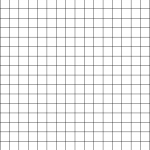Your Choice: Field Trip or Online work
We will not be meeting in person on Friday, October 14. Instead, please choose ONE of the following assignments to be completed before the next class meeting.
1. Field Trip:
Visit the Brooklyn Museum during class time or at some point between now and the next class meeting. Currently on view is a survey of work by artist, Standford Biggers.
NOTE: The museum is closed on Monday and Tuesday. Check the website for open hours. Admission is by suggested donation — meaning you can pay what you wish.
Exhibition Overview of “Sweet Funk—An Introspective“:
In this focused selection of thirteen pieces, New York–based artist Sanford Biggers challenges and reinterprets symbols and legacies that inform contemporary America. The exhibition is Biggers’ first museum presentation in New York, and it will also mark the Brooklyn debut of Blossom (2007), a large-scale multimedia installation that incorporates references ranging from lynchings to Buddha’s enlightenment under the bodhi tree. (more..)
Assignment:
- Research the artist and learn all you can about his work, prior to visiting the exhibition. In your CPB, outline important information about the artist: what is his background, what type of work does he make, what is the conceptual focus of his work, etc.
- Based on your research, make a list of 5 specific questions — topics related to his work that you would like to know more about.
- Visit the exhibition. Take NOTES! Make SKETCHES! Ask MORE QUESTIONS!
- Write a 1+ page review of the exhibition. Your review should discuss the overall exhibition and then compare and contrast two of the thirteen pieces on view. Choose two works that are physically/formally different, but have a common theme or concept.
- Your review should follow a standard format: Introduction, Body, Conclusion. Print out your review and be prepared to discuss next class. You will not be given credit for the assignment if you do not visit the Museum (be sure to save your entrance tag).
2. Online Work
Building upon the OpenLab Image Research Exercise we did in class, actively research and collect images for the OpenLab front page slider. Follow the guidelines below.
Assignment:
- Find 6 images to represent the 3 navigational sliders (News, Getting Started, Help) on the OpenLab website: http://openlab.citytech.cuny.edu/
- Make sure they represent each section topic and are also “student-friendly.”
- Images must hold an appropriate Creative Commons License:http://creativecommons.org/licenses/
- Or be in the Public Domain:http://en.wikipedia.org/wiki/Wikipedia:Public_domain_image_resources#General_Collection
- Review Class 10-11 Outline for specific guidelines and questions to ask before beginning your search.
- Images should be at least 748 pixels wide ×361 pixels high. Larger is better.
- Download and save at least 6 images : 2 choices for each category: News, Getting Started, Help
- Images should be well-considered. Take time to find the BEST images to represent each heading.
- Bring these images to class on a Flash Drive or CDROM.
DUE NEXT CLASS:
- Complete both Collage compositions. See Assignment #3 and Class 12 outline for details.
- Independent Work: Either a written 1-2 page review of the Standford Biggers exhibition OR images for the OpenLab front page slider.
- Materials needed next class: CPB, 9×12″ Bristol, pencils, eraser, cutting mat, knife/scissors, ruler/T-square, tubes of black and white gouache, brushes, rag, palette, water container, drafting tape.


